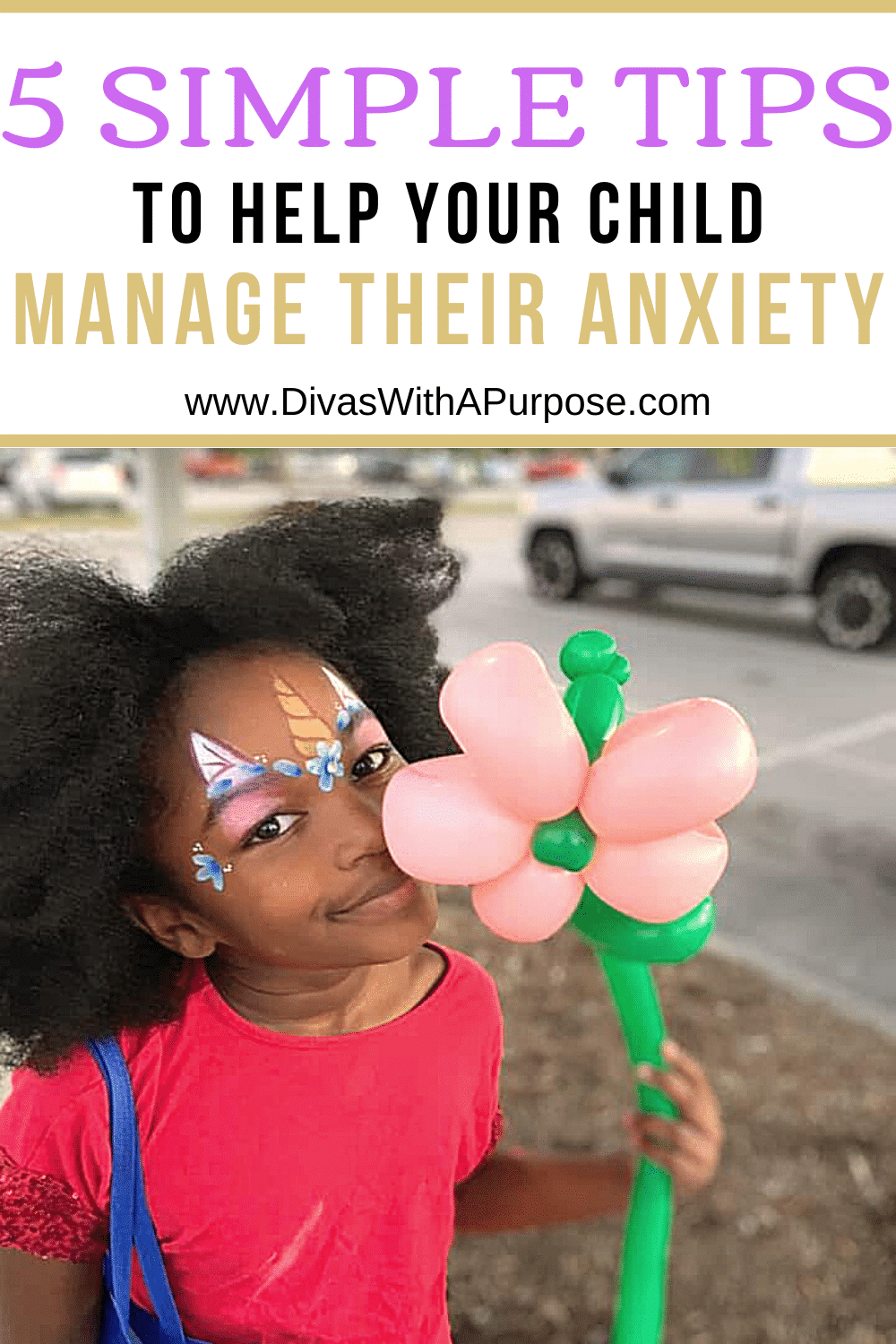5 Simple Tips to Help your Child Manage their Anxiety
Having a child with anxiety can feel so helpless, but there is so much you can do as a parent to help your little one manage and recognize their anxiety symptoms.
I have been fairly open with my community regarding my depression and anxiety diagnoses on social media. A part of that journey is recognizing and helping my daughter with her anxiety. After a traumatic Summer 2019, her symptoms became overwhelming to us both. Thanks to the help I was receiving, I was able to get the tools and resources to help her.
I was inspired to share these tips after a recent Facebook post discussing my daughter’s reactions to the murder of George Floyd and the protests that followed.

[Tweet “#NowReading: 5 Simple Tips to Help your Child Manage their Anxiety”]
You can help your child with anxiety by:
- Teaching your child to recognize their symptoms
- Calling anxiety by its name
- Teaching your child breathing techniques
- Giving your child extra grace during stressful times
- Helping your child discover what works for them
With your help, your child can learn to recognize and manage their anxiety so that they can live a more peaceful and joyful life.
Recognize Anxiety Symptoms
Helping your child learn what anxiety feels like in their body can help them to determine when their anxiety is starting instead of when it’s a full-blown anxiety attack.
[Tweet “Helping your child learn what anxiety feels like in their body can help them to determine when their anxiety is starting instead of when it’s a full-blown anxiety attack.”]
Anxiety Symptoms in Children:
- Stomach aches
- Headaches
- Explosive Anger
- Short quick breaths
- Sudden bouts of crying
- Meltdowns
- Difficulty Sleeping
When you recognize that they are having anxiety, talk with them about how they are feeling inside their body, and explain to them that those feelings can be anxiety. Also, understand that having a child with anxiety does not mean you are a bad parent.
Calling Anxiety by its name
Some parents don’t want to call anxiety by its name, but giving your child the terminology makes it feel much less scary for them. It has a name that they can talk about it and understand what is going on inside of them. It’s important to teach our children to name their feelings so they can learn how to make choices to deal with those feelings in a healthy way.
[Tweet “It’s important to teach our children to name their feelings so they can learn how to make choices to deal with those feelings in a healthy way.”]
Teach your Children Breathing Techniques
This article includes affiliate links.
One of the easiest things to teach a child with anxiety is to use mindful breathing to help them deal with their anxiety. The book “Mindful Moments for Kids: Breath Like A Bear” can help you lead your child through a breathing exercise that they can do anywhere to help combat their anxiety.
Teaching them to take deep slow mindful breaths can help slow their mind and help them process what they need to feel better.
Giving your Child Extra Grace during Stressful Times
During high-stress times of life, it is important for you as a parent to remember that your little one is dealing with the stressful event plus their anxiety. They are going to need more grace as you modify your expectations of them. This may mean giving them extra time to get dressed before school, or more time for them to spend in a quiet area doing a favorite quiet activity. Or just being a little more patient when their feelings are a little more extreme than normal.
Helping your Child With Anxiety Discover what Works for Them
The greatest gift you can give a child with anxiety is a toolbox full of tools and techniques that help them deal with their anxiety.
[Tweet “The greatest gift you can give a child with anxiety is a toolbox full of tools and techniques that help them deal with their anxiety.”]
Tools and Techniques:
- Sensory tools (i.e. weighted blankets, chew necklaces, swings, etc.)
- Breathing Exercises
- Sensory Awareness- (look for 2 red things, listen for 3 calming sounds, etc.)
- Gratitude Journaling
- Stress Balls
- Writing their worries down
- Progressive muscle relaxation
- Exercise
- Developing a healthy diet
- Healthy ways of decompressing
- Getting help from an adult
You can use a written list or a picture list that they can refer to when they need to choose a tool or technique to help when they are having anxiety until they can easily figure out what they need at that moment. Continuing to offer them support and choices as they work through their anxious feelings.
You don’t have to feel helpless as the parent of a child with anxiety. You also do not need to feel like a parenting failure, your child’s anxiety isn’t your fault. Helping them learn to recognize and cope with their anxiety is the greatest gift you can give your child. They can grow with the emotional awareness to help keep their anxiety under control so that they can do all the amazing things they are here to do.

Michelle D. Garrett is the founder of Divas With A Purpose. She focuses on sharing resources for being purposely productive; setting personal and professional goals and achieving them through daily action; and successfully running a business while focusing on your mental health. Michelle is a full-time entrepreneur who specializes in teaching female entrepreneurs how to show up consistently in their business – online and off.
If you enjoyed this article, you will also enjoy reading:
